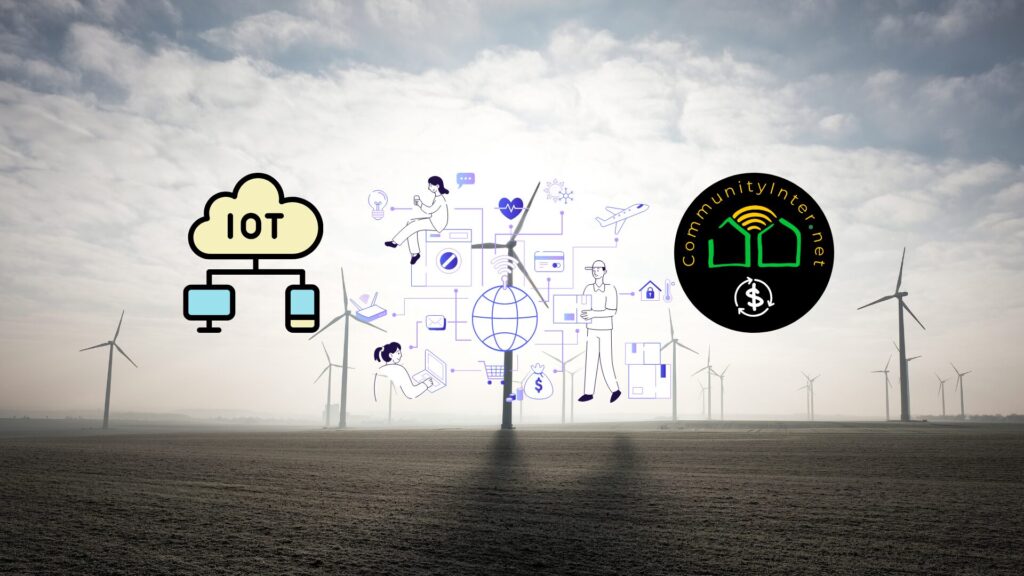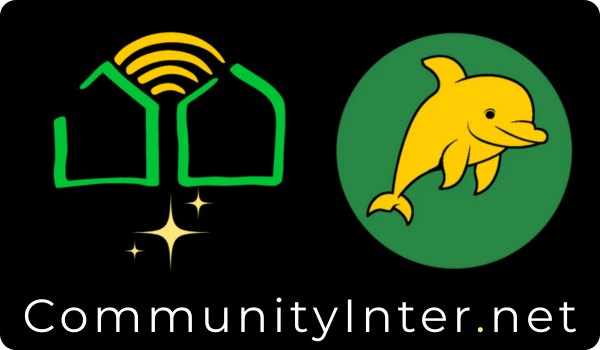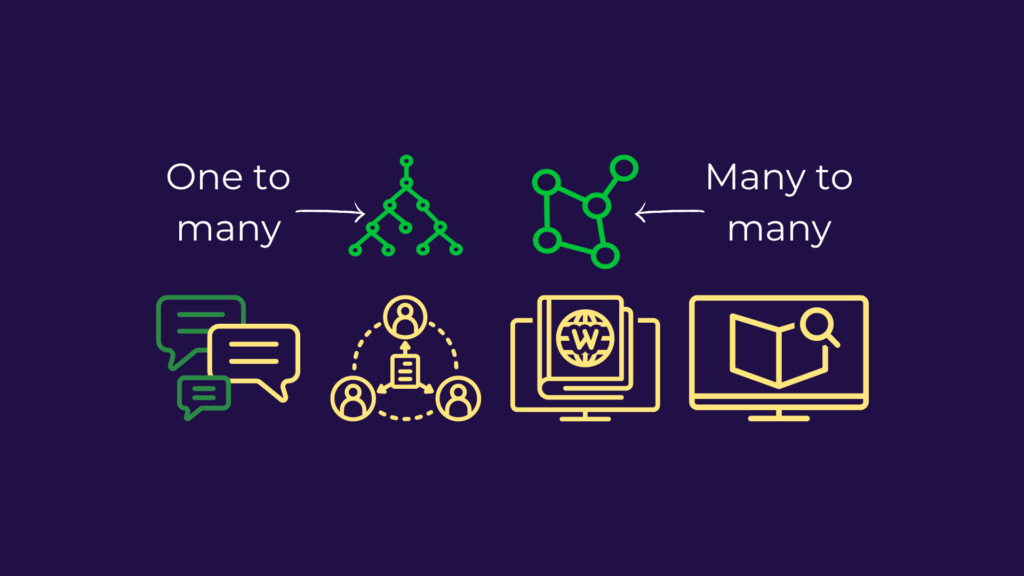Community Internets Promote Sustainability

A local, circular, regenerative economy promotes sustainability by focusing on resource efficiency, reducing waste, and enhancing local resilience. Community-owned internet networks can play a pivotal role in supporting such economies by providing equitable access to digital resources, fostering local innovation, and keeping economic benefits within the community. Here are some examples and strategies:
Examples of Local, Circular, Regenerative Economy
- Resource Efficiency and Waste Reduction:
- Example: Local businesses collaborate to use each other’s by-products as raw materials, minimizing waste. For instance, a brewery’s spent grain could be used by a local bakery or farm.
- Strategy: Community-owned networks can facilitate these collaborations by providing platforms for businesses to connect and share resources.
- Renewable Energy:
- Example: Communities invest in local renewable energy projects like solar or wind farms, reducing reliance on fossil fuels and promoting energy independence.
- Strategy: Internet networks can optimize energy use by supporting smart grid technologies and enabling remote monitoring and management of renewable energy systems.
- Local Food Systems:
- Example: Farmers’ markets and community-supported agriculture (CSA) programs shorten supply chains and promote local food production.
- Strategy: Community networks can provide platforms for e-commerce, connecting consumers directly with local producers and facilitating logistics and delivery services.
- Repair and Reuse:
- Example: Repair cafes and maker spaces encourage the repair and reuse of goods instead of discarding them, fostering a culture of sustainability.
- Strategy: Networks can host online tutorials, forums, and booking systems for these spaces, increasing community engagement and participation.
- Shared Mobility:
- Example: Car-sharing programs and bike-sharing systems reduce the need for private vehicle ownership, decreasing traffic congestion and emissions.
- Strategy: Internet networks can support these initiatives with apps and online platforms for booking and managing shared mobility resources.
How Community-Owned Internet Networks Promote Sustainability
- Keeping Economic Benefits Local:
- Incumbent ISPs: Often extract profits from the community, with revenues flowing out to shareholders and executives.
- Community-Owned Networks: Revenues are reinvested locally, funding infrastructure improvements, local jobs, and community projects. This keeps the economic benefits within the community and supports local development.
- Promoting Digital Inclusion:
- Incumbent ISPs: May neglect underserved areas or charge high prices, creating digital divides.
- Community-Owned Networks: Ensure affordable, equitable access to high-speed internet for all residents, enabling participation in the digital economy and access to online education, telehealth, and remote work opportunities.
- Supporting Local Innovation:
- Incumbent ISPs: May not prioritize local needs or innovation.
- Community-Owned Networks: Can tailor services to meet specific community needs, support local startups, and foster innovation hubs and tech incubators.
- Enhancing Community Resilience:
- Incumbent ISPs: Centralized control can lead to vulnerabilities in service continuity and disaster recovery.
- Community-Owned Networks: Decentralized, locally managed networks are more adaptable and resilient in the face of disruptions, ensuring continuous service during emergencies.
- Facilitating Circular Economy Practices:
- Incumbent ISPs: Focus on profit maximization rather than sustainability.
- Community-Owned Networks: Can support platforms and apps that facilitate sharing, trading, and reusing resources within the community, promoting circular economy principles.
- Encouraging Sustainable Practices:
- Incumbent ISPs: May not have incentives to promote sustainable practices.
- Community-Owned Networks: Can implement and advocate for sustainable practices, such as energy-efficient data centers, promotion of telecommuting to reduce transportation emissions, and support for smart city initiatives that optimize resource use.
Case Studies and Examples
- Chattanooga, Tennessee:
- Chattanooga’s EPB Fiber Optics, a community-owned network, provides high-speed internet and supports local initiatives. It reinvests profits into the community, funds local education and tech programs, and has helped transform Chattanooga into a thriving tech hub.
- Orangeburg County, South Carolina:
- Faced with neglect from commercial ISPs, Orangeburg County developed its own network to ensure digital access for its residents, supporting local education and economic development initiatives.
- Vermont Communications Union Districts (CUDs):
- Vermont’s CUDs are examples of regional collaborations to provide high-speed internet through community ownership, ensuring that profits stay local and supporting regional economic resilience.
By focusing on community ownership and local management, these networks ensure that the benefits of connectivity are shared equitably and sustainably, promoting a regenerative economic model that contrasts sharply with the extractive nature of traditional ISPs.






Responses